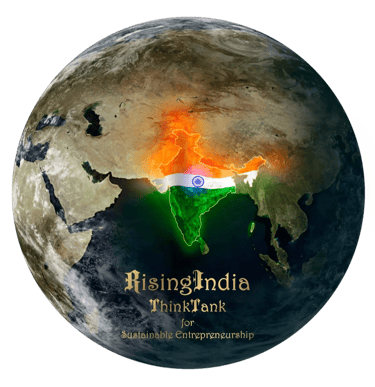Celebrating International Women’s Day 2025: A Century of Resilience, Rebellion, and Revolution
Origins: The Spark of a Movement International Women’s Day (IWD) traces its roots to early 20th-century labor and suffrage movements, born from women’s demands for equality, fair wages, and voting rights.
3/8/20252 min read
Origins: The Spark of a Movement
International Women’s Day (IWD) traces its roots to early 20th-century labor and suffrage movements, born from women’s demands for equality, fair wages, and voting rights.
1908: 15,000 garment workers, mostly immigrant women, marched through New York City protesting poor working conditions, low pay, and child labor. Their slogan: “Bread and Roses” (fair wages and dignity).
1909: The Socialist Party of America declared the first National Woman’s Day on February 28.
1910: At the International Socialist Women’s Conference in Copenhagen, German activist Clara Zetkin proposed a global day to advocate for women’s rights. Delegates from 17 countries unanimously approved the idea.
March 19, 1911: The first International Women’s Day was celebrated in Austria, Denmark, Germany, and Switzerland, drawing over 1 million people.
The date shifted to March 8 in 1917, when Russian women staged a strike for “Bread and Peace” during World War I, sparking the Russian Revolution. This protest led to women gaining suffrage in Russia and solidified March 8 as the permanent date.
Purpose: Why It Matters
IWD was founded to:
Demand equality: Voting rights, labor protections, and educational access.
Amplify solidarity: Unite women globally against oppression.
Celebrate achievements: Highlight contributions often erased from history.
As Clara Zetkin declared: “The proletarian woman fights hand in hand with the man of her class against capitalist society.”
Global Adoption: From Grassroots to Governments
By 1975, the United Nations officially recognized March 8 as International Women’s Day, adopting annual themes to guide advocacy (e.g., “Equality, Development, and Peace”). Today, it’s observed in over 100 countries, with traditions varying:
Italy: Men gift yellow mimosa blossoms.
China: Women receive a half-day off work.
Argentina: Massive marches for reproductive rights.
India: Campaigns against gender-based violence.
Year-by-Year Impact: Milestones and Movements
1910s–1950s:
Suffrage victories (e.g., USA in 1920, France in 1944).
Soviet Russia legalized abortion in 1920.
1960s–1990s:
UN’s Convention on the Elimination of Discrimination Against Women (CEDAW) in 1979.
The 1995 Beijing Declaration set a global gender equality agenda.
2000s–2020s:
#MeToo (2017): Exposed systemic abuse.
Women’s Marches (2017–2020): Millions protested Trump-era policies.
2020: Kamala Harris became the first female U.S. Vice President.
2023: Iran’s “Woman, Life, Freedom” uprising challenged theocracy.
2025: Progress and Persistent Gaps
As we mark IWD 2025 under the theme “Accelerating Equality: Innovation for Inclusion”, progress includes:
Political representation: 27% of global parliamentary seats held by women (up from 11% in 1995).
Education: 90% of girls worldwide now attend primary school.
Legal reforms: 155 countries have laws against domestic violence.
But challenges remain:
Economic inequality: Women earn 77 cents for every dollar men earn globally.
Unpaid labor: Women spend 3x more time on care work than men.
Crises: Climate change and conflict disproportionately displace women.
The Indian Context: Naari tu Narayani
In India, women have long been revered as embodiments of divine energy. The phrase “Naari tu Narayani” (Woman, you are Divine) reflects the deep-rooted cultural belief that women are manifestations of Shakti—the creative, nurturing, and transformative force of the universe.
From ancient texts like the Vedas and Upanishads, which celebrated women scholars like Gargi and Maitreyi, to the fierce warrior queens like Rani Lakshmibai and Kittur Chennamma, India’s history is rich with examples of women’s strength and leadership.
Yet, the dichotomy between reverence and reality persists. While we worship goddesses like Durga and Lakshmi, women in India continue to face challenges such as gender-based violence, unequal pay, and limited access to education and healthcare.
The Unfinished Revolution
From Clara Zetkin’s vision to today’s digital activism, International Women’s Day remains a rallying cry for equality. As UN Women Director Sima Bahous notes: “We’ve bent the arc of history—but it’s time to break it open.”
The fight continues. The future demands not just celebration, but action.
Sources: UN Women, IWD Committee, World Economic Forum Global Gender Gap Report 2024.

Email: hr@risingindia.in for opportunities
Stay connected on:
all rights reserved Copyright © 2025
Unleash Your Entrepreneurial Spirits
“We believe in peace and peaceful development, not only for ourselves but for people all over the world”
List your Startup
Schedule time with us to connect with founding team
Join Next Startups
